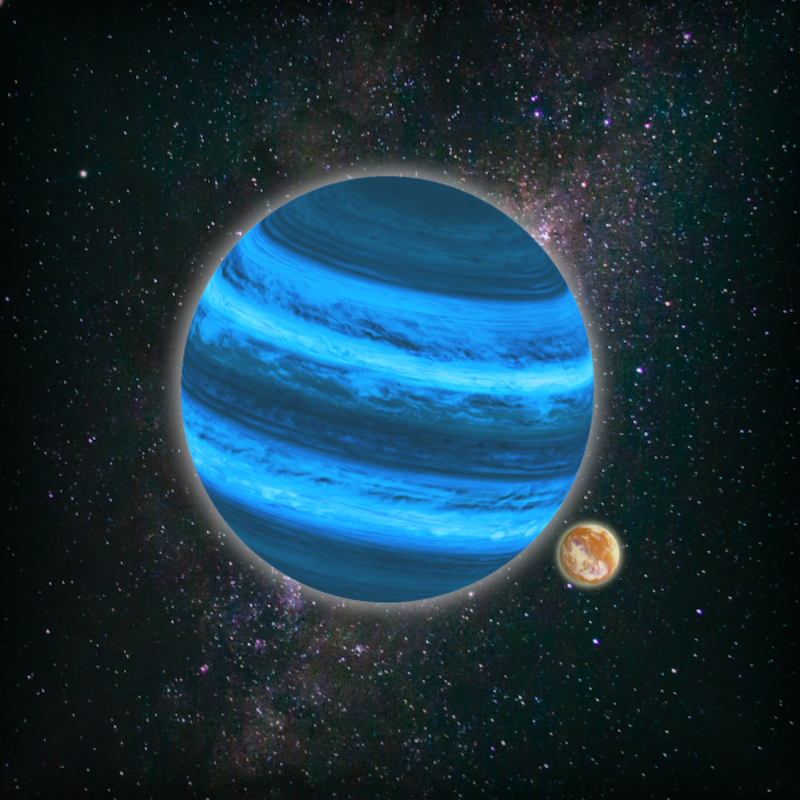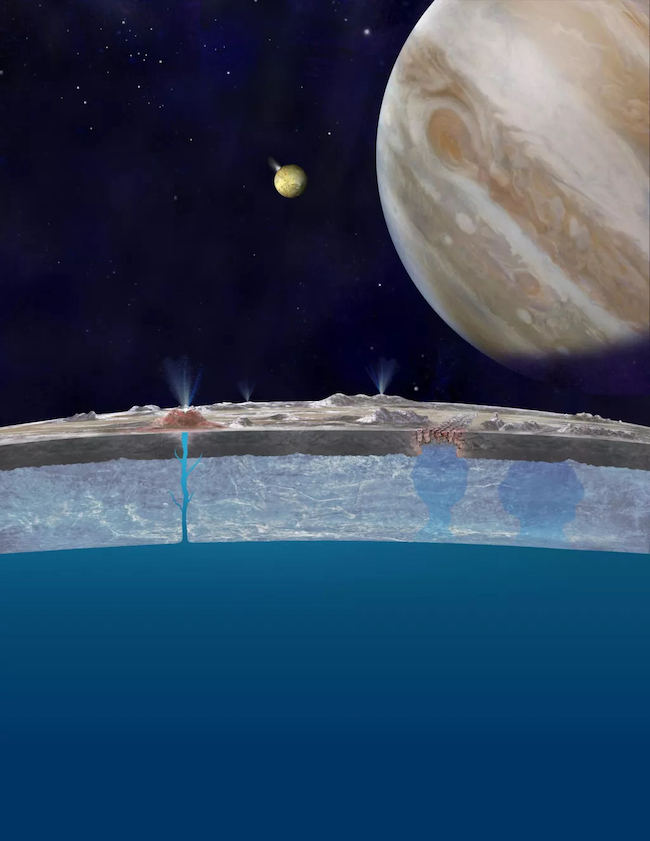
Water is abundant in our solar system. Besides Earth, scientists have found evidence for subsurface lakes on Mars and a growing number of subsurface oceans on small icy moons in the outer solar system. It seems reasonable, then, that water might exist on planets and moons in other solar systems. But what about rogue planets, free-floating worlds that don’t orbit a star? A June 2021 study from astrophysicists at Ludwig-Maximilians Universität München in Germany focused on the possibility of liquid water on exomoons of rogue planets. The intriguing results show that moons of rogue planets should indeed be able to possess an atmosphere and retain liquid water.
The peer-reviewed International Journal of Astrobiology published this study on June 8, 2021.
Billions of free-floating planets
It might sound weird for planets to exist apart from stars. But astronomers have discovered many of these rogue planets in the past several years. Astronomers estimate there should be at least as many free-floating planets as there are stars in the Milky Way (over 100 billion), and probably more. They drift freely through space, untethered by the gravity of a local star. And some of them should have moons. The paper states:
A free-floating planet … is a planetary-mass object that orbits around a non-stellar massive object (e.g. a brown dwarf) or around the galactic center. The presence of exomoons orbiting free-floating planets has been theoretically predicted by several models.

Liquid water on moons of rogue planets?
Could any of these moons have water on their surfaces, or inside? It would seem so, according to the new paper:
Under specific conditions, these moons are able to retain an atmosphere capable of ensuring the long-term thermal stability of liquid water on their surface.
We find that, under specific conditions and assuming stable orbital parameters over time, liquid water can be formed on the surface of the exomoon.
The final amount of water for an Earth-mass exomoon is smaller than the amount of water in Earth oceans, but enough to host the potential development of primordial life. The chemical equilibrium time-scale is controlled by cosmic rays, the main ionization driver in our model of the exomoon atmosphere.

Enough water for life
In this study, Barbara Ercolano, Tommaso Grassi and their colleagues used a computer to model the atmosphere of an exomoon orbiting a free-floating planet. While the results indicated that the moon would likely have 10,000 times less water than in Earth’s oceans, it would still possess 100 times more water than in Earth’s atmosphere. That is more than enough to support some forms of life.
Giant planets with giant moons
In the study, the computer model simulated a moon about the size of Earth orbiting a Jupiter-sized free-floating planet. The largest moon we know of is Ganymede, Jupiter’s biggest satellite, which is about 26% larger than Mercury. The simulation’s large Earth-sized moon might not be that much of a stretch, though. Tentative evidence exists for a giant moon orbiting the planet Kepler-1625b, 8,000 light-years away in the direction of our constellation Cygnus the Swan. In that case, the possible moon is about the size of Neptune and the planet is several times larger than Jupiter.

Cosmic rays instead of sunlight
One obvious question is: how could a planetary system with no sun possibly support life? Plants on Earth need sunlight for photosynthesis, and almost all other life depends on plants. In the computer model, the researchers found that cosmic rays could substitute for sunlight to convert molecular hydrogen and carbon dioxide into water and other products.
The tidal forces exerted by the planet on its moon could provide heat, much as the giant planets in our solar system do with their icy moons. If there were enough carbon dioxide in the moon’s atmosphere, at least 90%, the greenhouse effect would retain enough of that heat to keep water liquid and make life possible. As summarized in the paper:
We found that an exomoon orbiting around a free-floating planet provides an environment that might sustain liquid water onto its surface if the optical thickness of the atmosphere is relatively large and the orbital parameters produce enough tidal heating to increase the temperature over the melting point of water.
The idea of water and life on worlds that don’t orbit stars might seem like science fiction. But if these researchers are right, it might not be that far-fetched after all. Exomoons are still difficult to detect, but that will change in the coming years. What will astronomers find?
Bottom line: A new study from scientists at Ludwig-Maximilians Universität München in Germany says that there could be enough heat and liquid water on moons of rogue planets – free-floating worlds with no suns – to support life. Cosmic rays, instead of direct sunlight, could drive processes such as photosynthesis.
Source: Presence of water on exomoons orbiting free-floating planets: a case study











